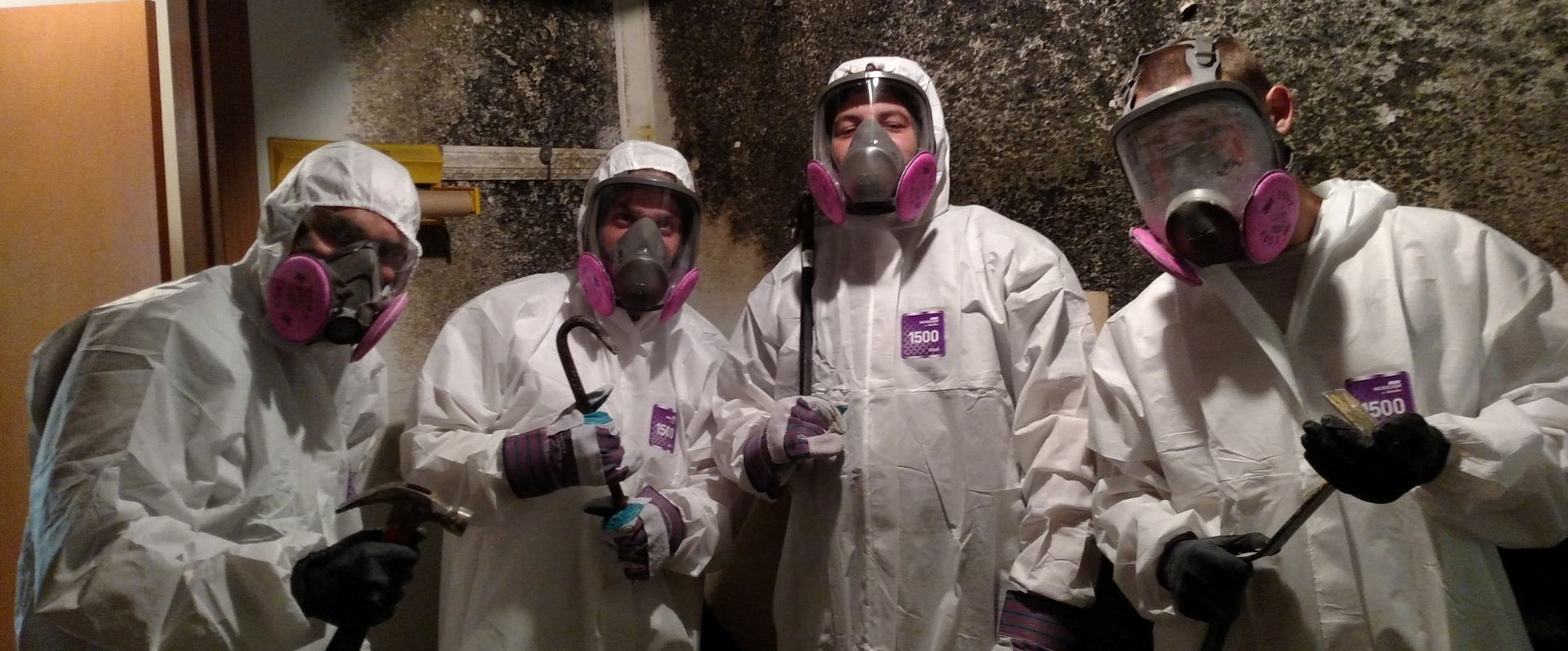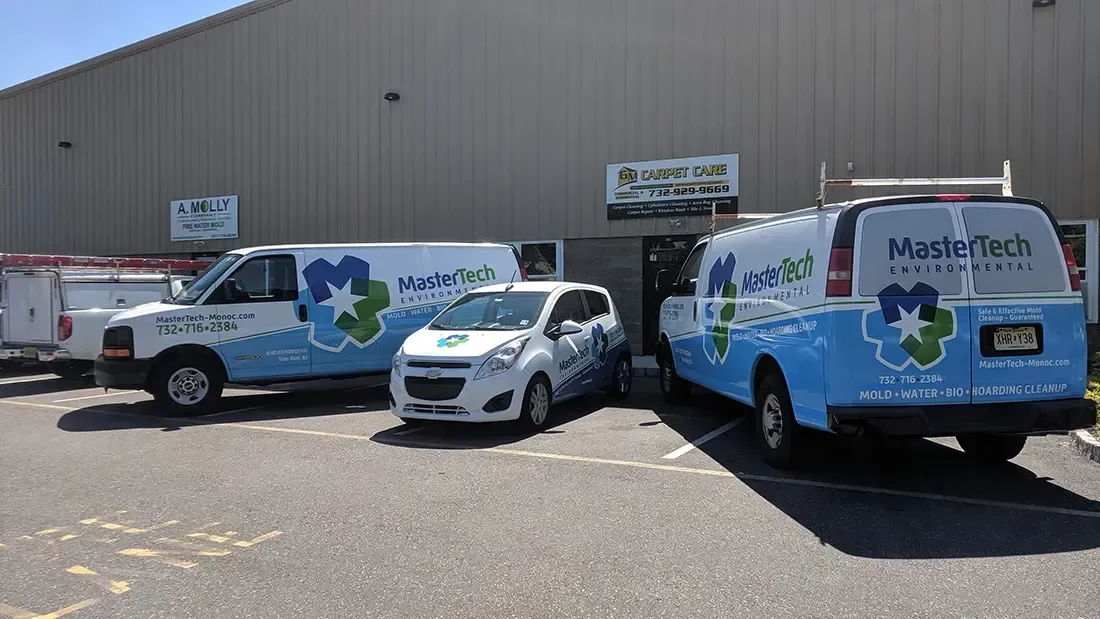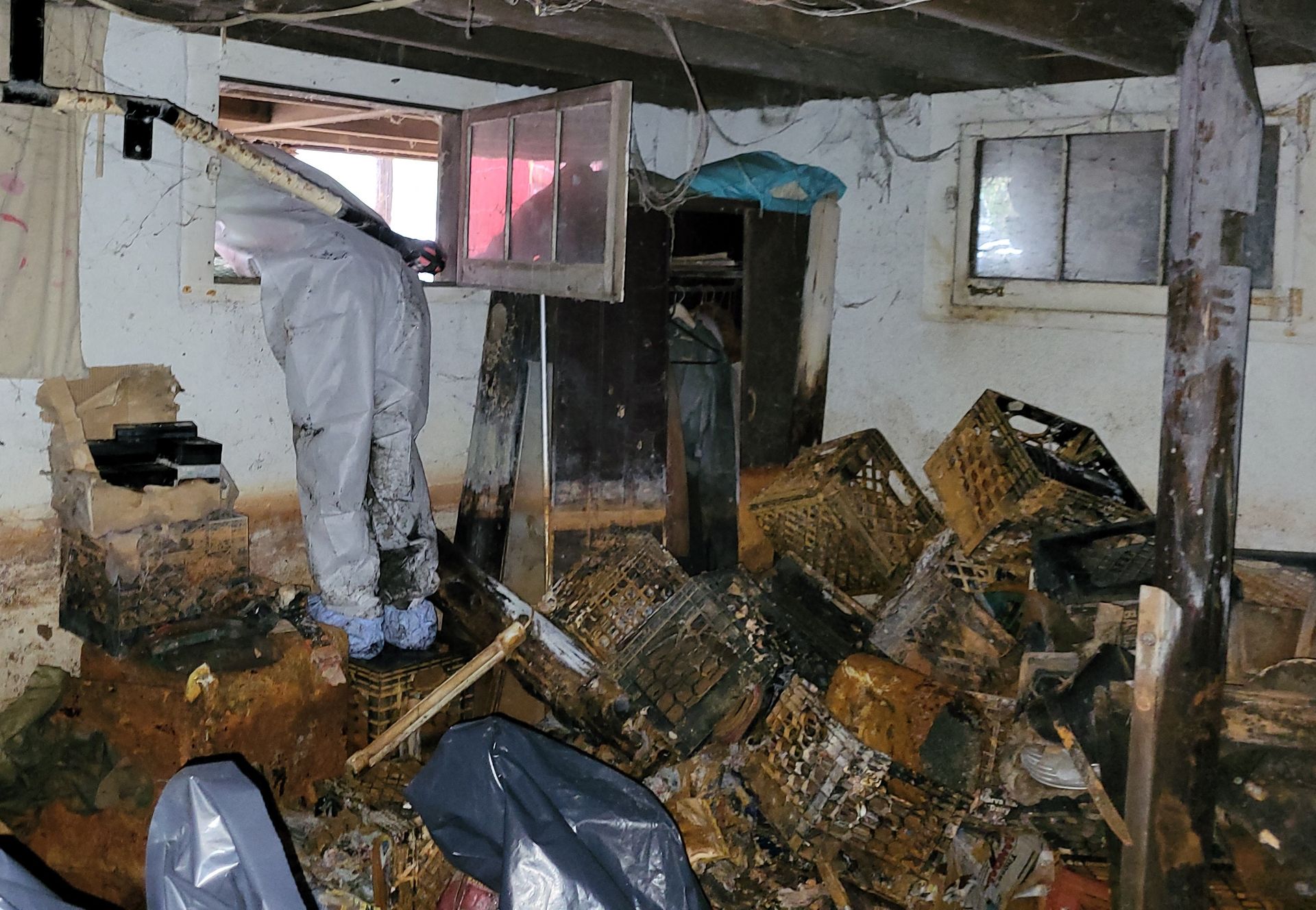Homeowner Tips – Cleaning Small Areas of Mold
One of the most common questions I’m asked is “how do I clean up mold?” Friends and family ask me because I’m a professional mold inspector and mold remediator and although I know how to remove mold, I also realize that most homeowners don’t have the training and resources to do the job properly.
It’s a fact that almost every home eventually gets mold. I’ll show you how to identify mold and eliminate small areas of contamination. Although I always recommend hiring a professional mold remediation company to handle the clean up of large areas of mold, I’ll provide some basic homeowner cleanup tips. I do this because hiring a professional mold removal company is not within everyone’s budget.
Step 1: Overview
Mold can become a major issue and negatively affect the health of you and your family and damage property. It blackens the grout lines in your shower, discolors drywall, shows up as black spots on siding, darkens decks, and grows on and rots damp wood everywhere. And as I mentioned, it can be horrible for your health. It releases microscopic spores that cause allergic reactions, runny noses and sneezing, as well as irritating, even injurious, odors.
Almost every home will wind up with some level of mold contamination. The trick is to stop it before it gets out of control. In this article, I’ll show you how to identify mold and eliminate the small infestations as well as the big ones that have gotten out of hand.
You can easily remove minor mold with ordinary household cleaning products. But disturbing big infestations can be bad for your health, particularly if you are an allergy sufferer or have a weakened immune system. When you discover an extensive mold problem, we recommend that you use the rigorous protective measures I show in Photos 1 – 6, or consider calling in a professional to handle the problem. And even if you hire pros, read through this article and make sure they follow similar precautions to keep the mold from spreading throughout your house.
Be aware that some types of mold are highly toxic. If you have an allergic reaction to mold or a heavy infestation inside your home, call in a pro to analyze the types of mold present and the level of contamination. Or call tour local public heath department and ask for mold-testing advice.
Step 2: How to identify mold
Mold is everywhere. It’s a type of fungus that grows from tiny spores that float in the air. It can grow almost anywhere that spores land and find moisture and a comfortable temperature, between 40 and 100 degrees F. Typically that includes about every damp place in your home.
You can easily spot the most visible type of mold, called mildew, which begins as tiny, usually black spots but often grows into larger colonies. It’s the black stuff you see in the grout lines in your shower, on damp walls, and outdoors on the surfaces of deck boards and painted siding, especially in damp and shady areas. A mildewed surface is often difficult to distinguish from a dirty one. To test for mildew, simply dab a few drops of household bleach on the blackened area. If it lightens after one to two minutes, you have mildew. If the area remains dark, you probably have dirt.
Mildew is a surface type of mold that won’t damage your home’s structure. But other types of mold cause rot. Probe the suspect area with a screwdriver or other sharp tool. If the wood is soft or crumbles, the fungi have taken hold and rot has begun.
If you have a high concentration of mold, you may smell it. If you detect the typical musty odor, check for mold on damp carpets, damp walls, damp crawlspaces and wet wood under your floors, wet roof sheathing and other damp areas. Clean up these infestations right away before they get worse.
Step 3: Removing large infestations requires precautions—and work!
1: Remove moldy carpet
Cut stained or musty carpet and pads into 6 x 8-ft. sections with a utility knife. Using a pump sprayer, mist the surfaces with water to control the spread of airborn mold spores, and roll up the sections. Double-wrap them in 6-mil plastic and tape them with duct tape for disposal. Wear protective clothing and if possible, run an exhaust fan in the window.
2: Seal off the damaged area
Seal the room from the rest of the house. Cover the doorway with a barrier made of overlapping plastic sheeting and tape it to the wall and floor. Cover all air ducts in the room with plastic and tape.
3: Open up moldy walls
Pry off baseboards and trim from contaminated areas with a pry bar and block of wood. Probe heavily stained or moisture-swollen walls using a screwdriver to discover and open up moisture damage and hidden mold in the insulation and wall framing.
4: Moisten and then bag moldy materials
Turn off the electrical power to the room and cut open the damaged wall with a reciprocating saw, drywall saw or utility knife. Mist the moldy drywall and insulation with the pump sprayer to avoid spreading airborn mold spores. Double-bag moldy material in heavy-duty plastic bags and tie them shut.
You can scrub away surface mold common to bathrooms, decks and siding in a matter of minutes using over-the-counter mold cleaning products available at your local home goods stores. Always avoid using bleach to clean up mold because there are more VOC’s (Volatile Organic Compounds) found in bleach than mold. But often, mold grows and spreads in places you don’t notice until you spot surface staining, feel mushy drywall or detect that musty smell.
If you have to remove mold concentrations covering more than a few square feet, where the musty odor is strong or where you find extensive water damage, I recommend that you take special precautions. You want to not only avoid contaminating the rest of the house but also protect yourself from breathing high concentrations of spores and VOCs.
Wear old clothes and shoes that you can launder or throw away after the cleanup work.
Wear special N-95 or P-100 respirators, (available at Home Depot & Lowes) in addition to goggles and gloves.
Set an old box fan or a cheap new one in a window to ventilate the room while working. Throw it out when you’re done cleaning, because the spores are almost impossible to clean off. Tape plywood or cardboard around the window openings so the spores can’t blow back in. Wrap and tape moldy carpeting in 6-mil plastic, and double-bag mold-infested debris in garbage bags for disposal. To control airborne spores, moisten moldy areas with a garden sprayer while you work. Turn off your furnace and air conditioner and cover ducts and doors to contain spores. Keep your wet/dry vacuum outside when you vacuum. Moisture damage and large mold infestations go hand in hand. Clean under leaky windows where wind-driven rain frequently gets into the wall.
You’ll have to open up the wall to get at the mold growing inside. Since you have to repair the wall anyway, don’t hesitate to cut the drywall back beyond the obvious damage to find all the mold and let the wall dry out. To avoid cutting electrical wires, poke a hole through the damaged section and locate the wires first. Turn off the power to the outlets before you cut.
If the moisture damage has been neglected or gone unnoticed for a long time, you’re likely to find rot. Where possible, remove and replace soft, spongy studs and wall sheathing. Where removal is difficult, treat the affected areas with a wood preservative (available at home centers), after cleaning the wood and allowing it to dry. Then double up (sister) rotted members with pressure-treated wood.
Tips for Mold Prevention
The key to stopping most mold is to control moisture. The worst contaminations usually occur in damp crawlspaces, in attics and walls where air circulation is poor and water has leaked in from the outside, and in basements with poor foundation drainage. Stopping leaks, ensuring good ventilation in attics, keeping crawlspaces dry and routing water away from the foundation walls (keep your gutters clean) are the best defenses.
Mildewcide in paint is usually effective for controlling surface mold in damp rooms like bathrooms and outside in shady areas. Many paints already have mildewcide in them. Check with your paint dealer to be sure. You can add mildewcide, although you might void the paint warranty.
Step 4: Cleanup and repair
Vacuum up moldy debris with a standard wet/dry vacuum. Buy an extra length of hose and run it out the window so you can keep the vacuum outside to avoid further spore spread. Scrub moldy surfaces stains from walls and wood trim. Use a soft brush and work until signs of the mold disappear.
Wipe off, but DO NOT RINSE these surfaces. Set trim in direct sunlight to dry. Scrub concrete with TSP or automatic dishwasher detergent. Seal moldy areas after allowing to dry, then seal all previously infested areas with a pigmented shellac or oil-based primer. Now you can install new insulation and drywall and nail the trim back on.
Complete the initial cleanup by vacuuming up the debris. Thoroughly clean the wet/dry vac afterward by disposing of the filter and washing out the tank, hose and attachments with the mold cleaning solution.
After scrubbing the surfaces, simply allow the mold solution to continue to penetrate the surfaces and dry. Wash concrete floors with TSP, automatic dishwasher detergent or a chlorinated cleaner such as Comet.
Set out dehumidifiers and new fans to dry the now-cleaned areas for at least three days, then check them (by sight and smell) for mold. If you discover more mold, clean again.
When you’re sure the mold has been eliminated, seal the wood surfaces with pigmented shellac like BIN or an oil-based primer like KILZ. Repaint cleaned wall surfaces with a regular latex paint that contains a mildewcide to help stop future mold growth. And keep in mind that if the moisture returns, mold will return.
Removing surface mold - Surface molds grow in just about any damp location, such as the grout lines of a ceramic tiled shower. They’re easy to scrub away with over-the-counter mold cleaning solutions. You can buy mold & mildew cleaner at hardware stores, paint stores and most home centers.
Even for simple cleaning, protect yourself from contact with mold and the bleach solution by wearing a long-sleeve shirt and long pants as well as plastic or rubber gloves and goggles.
If the mold doesn’t disappear after light scrubbing, reapply the cleaning solution and let it sit for a minute or two. Then lightly scrub again. Seal the clean surfaces when they’re thoroughly dry to slow future moisture penetration. Apply a grout sealer (available at tile shops and home centers) to tile joints. If mold returns after several attempts at cleaning, contact a professional.
Caution! -- Never mix ammonia or any detergent containing ammonia with bleach. The combination forms a poisonous gas.
Good luck and happy cleaning!






